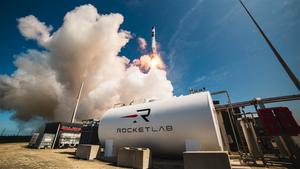
Security and aerospace company Northrop Grumman (NYSE: NOC) reported Q2 CY2025 results exceeding the market’s revenue expectations, with sales up 1.3% year on year to $10.35 billion. The company expects the full year’s revenue to be around $42.15 billion, close to analysts’ estimates. Its GAAP profit of $8.15 per share was 18.9% above analysts’ consensus estimates.
Is now the time to buy Northrop Grumman? Find out by accessing our full research report, it’s free.
Northrop Grumman (NOC) Q2 CY2025 Highlights:
- Revenue: $10.35 billion vs analyst estimates of $10.05 billion (1.3% year-on-year growth, 3% beat)
- EPS (GAAP): $8.15 vs analyst estimates of $6.86 (18.9% beat)
- The company reconfirmed its revenue guidance for the full year of $42.15 billion at the midpoint
- Operating Margin: 13.8%, up from 10.7% in the same quarter last year
- Free Cash Flow Margin: 6.2%, down from 10.8% in the same quarter last year
- Backlog: $89.74 billion at quarter end
- Market Capitalization: $74.16 billion
Company Overview
Responsible for the development of the first stealth bomber, Northrop Grumman (NYSE: NOC) specializes in providing aerospace, defense, and security solutions for various industry applications.
Revenue Growth
A company’s long-term sales performance is one signal of its overall quality. Any business can put up a good quarter or two, but the best consistently grow over the long haul. Unfortunately, Northrop Grumman’s 3.1% annualized revenue growth over the last five years was sluggish. This was below our standard for the industrials sector and is a tough starting point for our analysis.
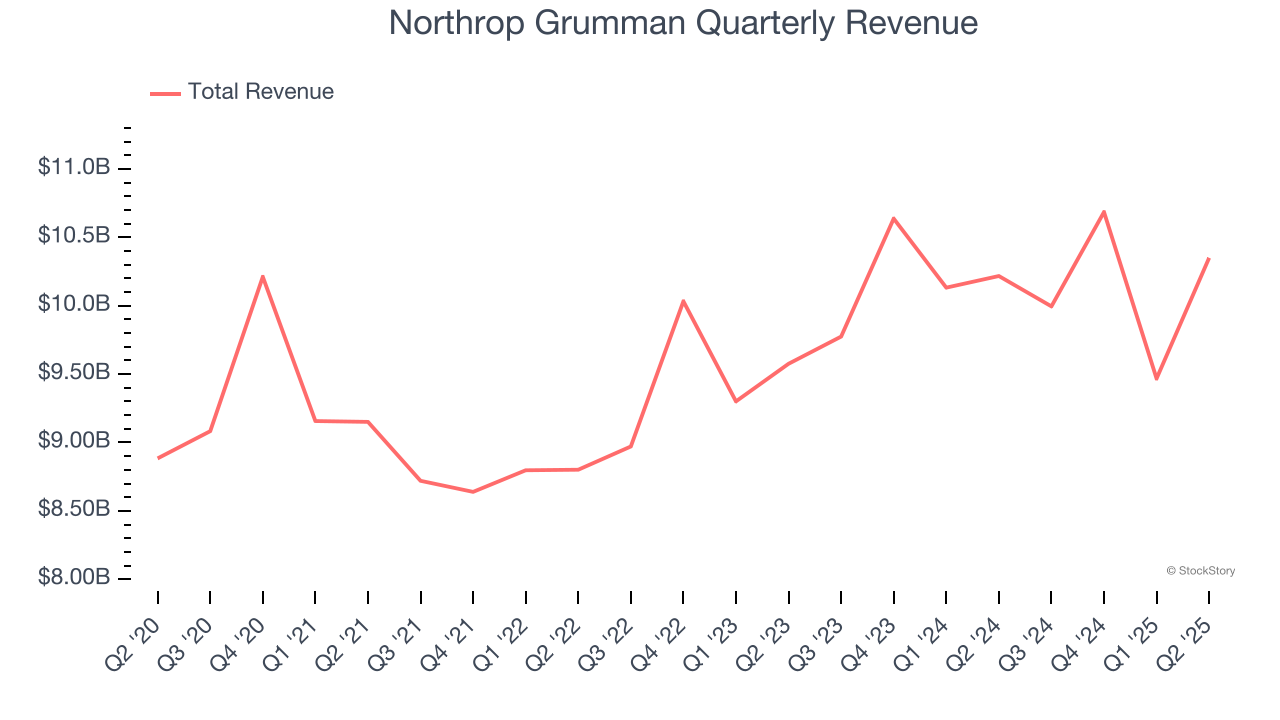
We at StockStory place the most emphasis on long-term growth, but within industrials, a half-decade historical view may miss cycles, industry trends, or a company capitalizing on catalysts such as a new contract win or a successful product line. Northrop Grumman’s annualized revenue growth of 3.4% over the last two years aligns with its five-year trend, suggesting its demand was consistently weak. 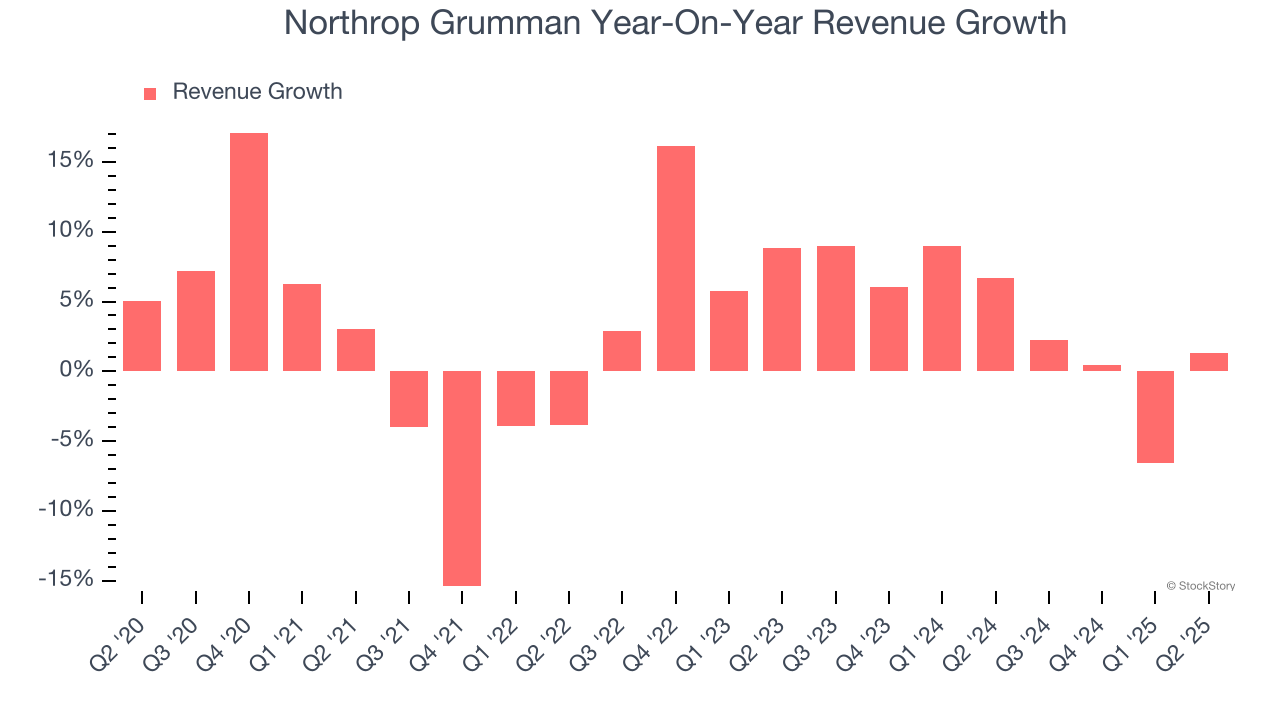
This quarter, Northrop Grumman reported modest year-on-year revenue growth of 1.3% but beat Wall Street’s estimates by 3%.
Looking ahead, sell-side analysts expect revenue to grow 6.7% over the next 12 months. While this projection indicates its newer products and services will spur better top-line performance, it is still below the sector average.
Today’s young investors won’t have read the timeless lessons in Gorilla Game: Picking Winners In High Technology because it was written more than 20 years ago when Microsoft and Apple were first establishing their supremacy. But if we apply the same principles, then enterprise software stocks leveraging their own generative AI capabilities may well be the Gorillas of the future. So, in that spirit, we are excited to present our Special Free Report on a profitable, fast-growing enterprise software stock that is already riding the automation wave and looking to catch the generative AI next.
Operating Margin
Operating margin is one of the best measures of profitability because it tells us how much money a company takes home after procuring and manufacturing its products, marketing and selling those products, and most importantly, keeping them relevant through research and development.
Northrop Grumman has managed its cost base well over the last five years. It demonstrated solid profitability for an industrials business, producing an average operating margin of 10.6%.
Analyzing the trend in its profitability, Northrop Grumman’s operating margin decreased by 5.6 percentage points over the last five years. This raises questions about the company’s expense base because its revenue growth should have given it leverage on its fixed costs, resulting in better economies of scale and profitability.
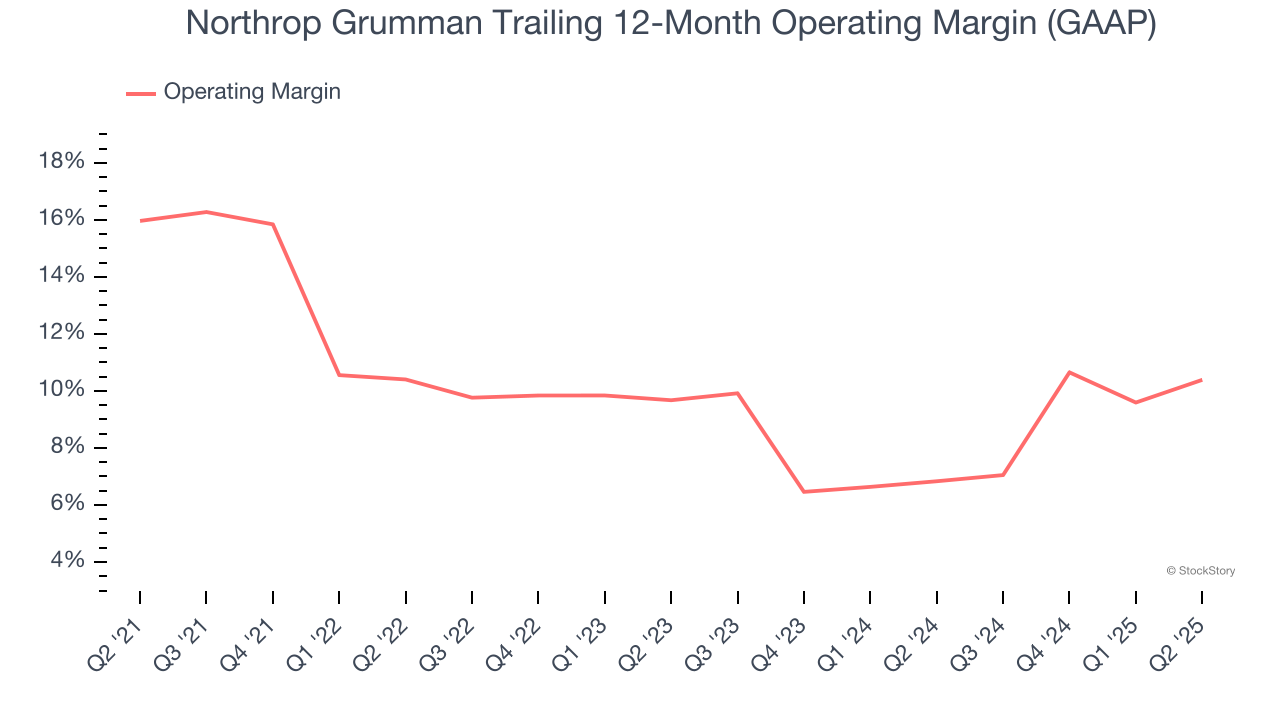
In Q2, Northrop Grumman generated an operating margin profit margin of 13.8%, up 3.1 percentage points year on year. This increase was a welcome development and shows it was more efficient.
Earnings Per Share
Revenue trends explain a company’s historical growth, but the long-term change in earnings per share (EPS) points to the profitability of that growth – for example, a company could inflate its sales through excessive spending on advertising and promotions.
Northrop Grumman’s EPS grew at a remarkable 13.8% compounded annual growth rate over the last five years, higher than its 3.1% annualized revenue growth. This tells us the company became more profitable on a per-share basis as it expanded.
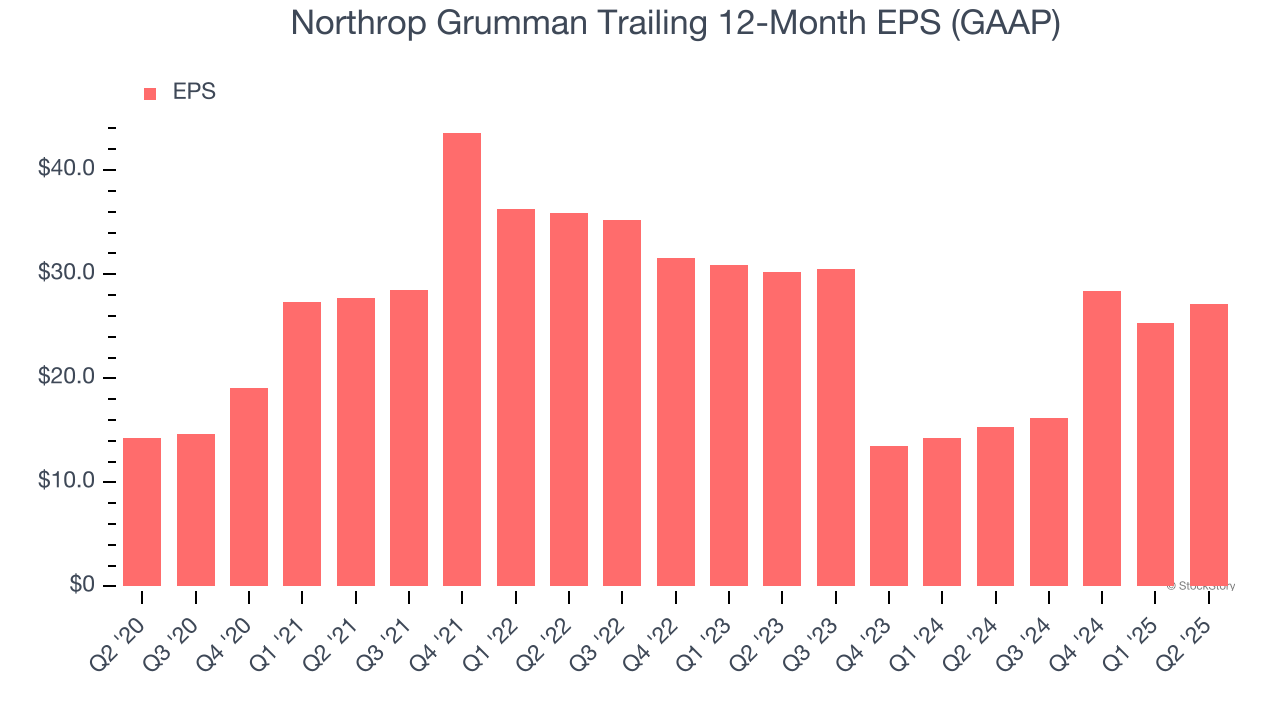
Diving into the nuances of Northrop Grumman’s earnings can give us a better understanding of its performance. A five-year view shows that Northrop Grumman has repurchased its stock, shrinking its share count by 13.9%. This tells us its EPS outperformed its revenue not because of increased operational efficiency but financial engineering, as buybacks boost per share earnings. 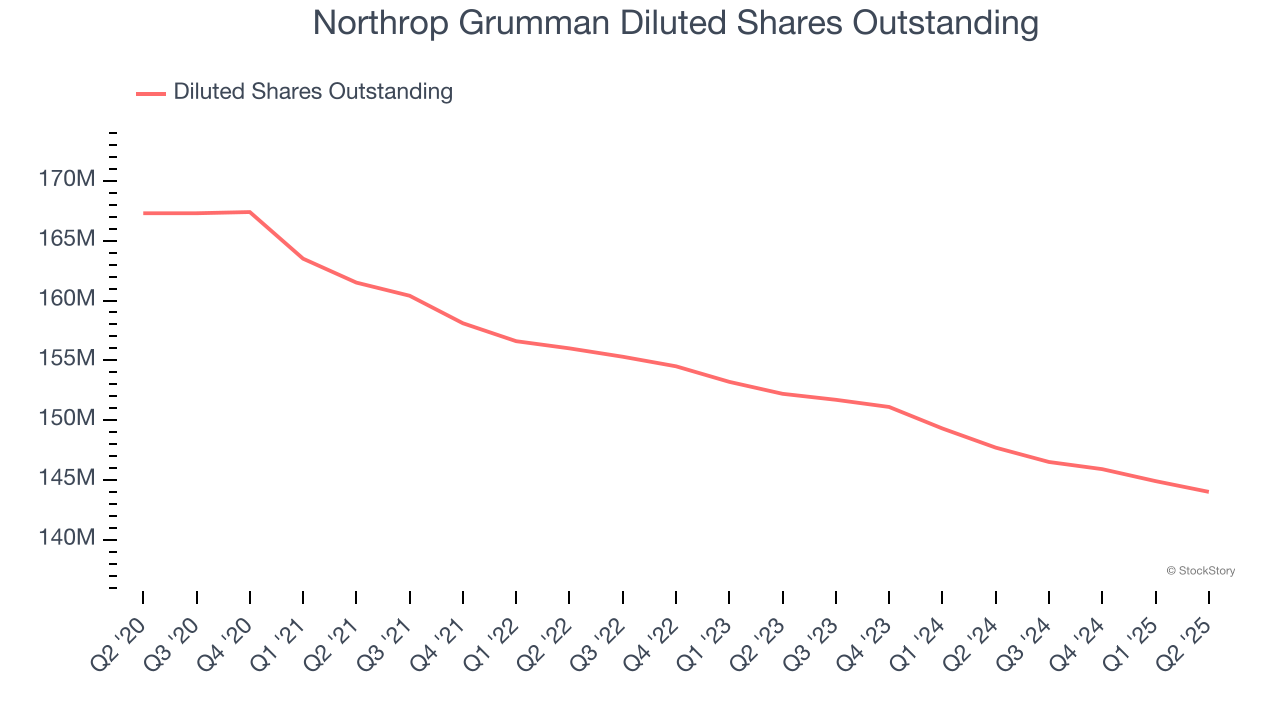
Like with revenue, we analyze EPS over a shorter period to see if we are missing a change in the business.
For Northrop Grumman, its two-year annual EPS declines of 5.2% mark a reversal from its (seemingly) healthy five-year trend. We hope Northrop Grumman can return to earnings growth in the future.
In Q2, Northrop Grumman reported EPS at $8.15, up from $6.36 in the same quarter last year. This print easily cleared analysts’ estimates, and shareholders should be content with the results. Over the next 12 months, Wall Street expects Northrop Grumman’s full-year EPS of $27.14 to grow 4.6%.
Key Takeaways from Northrop Grumman’s Q2 Results
We enjoyed seeing Northrop Grumman beat analysts’ revenue expectations this quarter. We were also glad its EPS outperformed Wall Street’s estimates. That the company maintained full-year revenue guidance is comforting. Overall, this print had some key positives. The stock traded up 3.9% to $535 immediately following the results.
So should you invest in Northrop Grumman right now? If you’re making that decision, you should consider the bigger picture of valuation, business qualities, as well as the latest earnings. We cover that in our actionable full research report which you can read here, it’s free.
